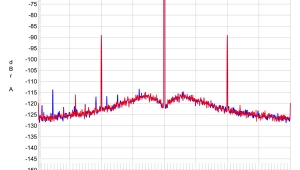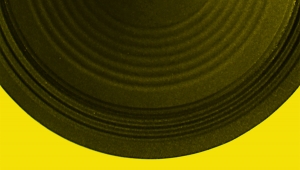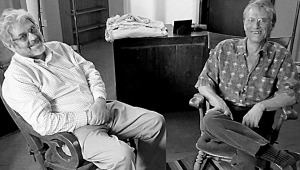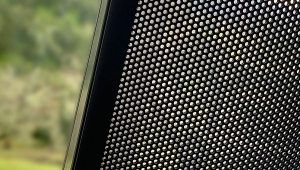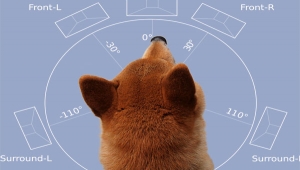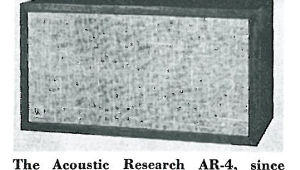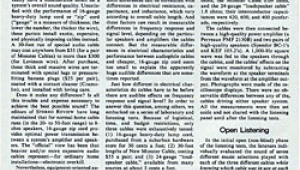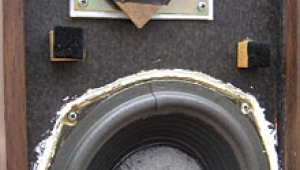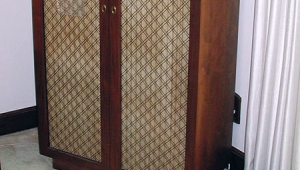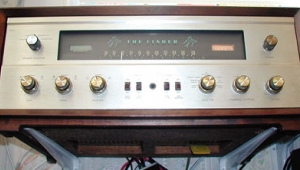| Columns Retired Columns & Blogs |
How Hi-Fi are Stereo Discs?
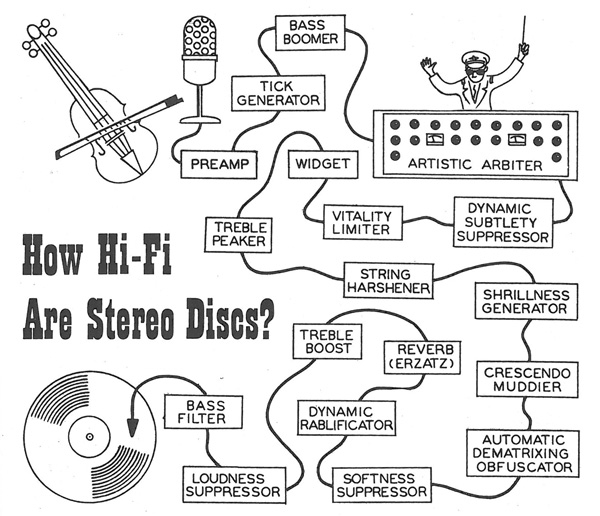
Editor's Note from 1992: This seminal J. Gordon Holt essay on how the art of recording natural sound became compromised in favor of unmusical artificiality for good commercial reasons was originally published in August 1964, in Vol.1 No.8. Though most people these days listen to classical music from CDs, not LPs, in the intervening decades, recording technology has not changed for the better as much as one might have hoped. Nevertheless, the days of wretched multimiking excess described by Gordon are past, and it's rare to find the music treated with the lack of respect typical of a mid-'60s Columbia session. Although some of the smaller companies—Reference Recordings, Delos, Chesky, Mapleshade, Dorian, and Sheffield Lab in the US; Meridian, Nimbus, and Hyperion in the UK—consistently use honest, minimal miking, it is not unknown for the majors in the '90s to do likewise. And the use of time delay for spot microphones, pioneered by Denon in the mid-'80s, means that instruments that might tend to become obscured at orchestral climaxes can now be brought up in level without unnaturally time-smearing the sound. I still find it sad, however, that it is rare to hear the sheer dynamic range of a live ensemble successfully captured on a commercial recording.—John Atkinson
Footnote 1: Hi-Fi Tape Systems, 1964 Edition, p.126.—J. Gordon Holt
A small but enterprising record manufacturer played host to a near-riot some years ago when it unveiled a new "compatible stereo" disc system before a gathering of musicians, magazine editors, recording engineers, and record reviewers. The compatible stereo disc was received with mixed feelings, but it wasn't the demonstration that caused the ruckus; it was the ensuing question-and-answer period that, in the words of one observer, "had aspects of a street brawl at times."
One reason for this was that many of the "outsiders" present—that is, people who weren't actually associated with record companies—had evidently been under the impression that all records made since 1955 were equalized to complement the "industry-standard" RIAA playback equalization curve, and were serenely confident that today's records were as hi-fi as the state of the art would permit. So when they heard manufacturers of some reputedly super-fi records admitting unabashedly that they messed around with the frequency response, dynamic range, stereo separation, and orchestral balance on all their discs, the "outsiders' " disillusionment was abetted by an uncomfortable feeling that they had been the victims of a grand hoax. The record critics were particularly miffed about it, probably because they recalled the reviews they had written extolling the magnificent fi of these discs that had just been revealed as cleverly contrived artifices. Yet when they voiced their objections, the record manufacturers seemed honestly surprised that anyone would question their sonic shenanigans on the grounds that they degraded fidelity, since the manipulations were done solely to make the records sound better.
"Sonic enhancement," otherwise known as "artistic engineering," has always been a part of the record maker's bag of tricks. Early recording and playback equipment was not capable of approximating a broad, smooth frequency response, so the recording engineer had to augment his craft with a great deal of art in order to make the end result sound similar to the original.
By the mid-1940s, though, high fidelity from discs was beginning to look like a real possibility. The general public was still getting pretty shoddy sound for its record dollar, but research labs were turning out some amazingly good disc sound, and a few avant-garde record buyers were discovering that imported English Decca ffrr 78s had sound on them that put our domestic releases to shame. It was, in fact, just about this time that audiophiles discovered that the equalization on the best discs was accurate enough that the discs sounded most natural when reproduced via an accurate complementary curve, and were demanding equalization controls on their preamps. With the advent of the LP disc, in late 1948, the last remaining technical problem—surface noise—was pretty much solved, and by the time heated [cutting] styli with feedback came into widespread use, the disc medium had reached the stage where it could transcribe, and play back, just about anything that the best microphones could pick up.
Up until that time, the objective of audio was absolute fidelity: sound that was indistinguishable from the original. Recording engineers worked to re-create the illusion of listening to a live orchestra from "the best seat in the house," and the better discs from the late 1950s were evidence that the recording art was really starting to approach its ultimate goal. But somewhere along the line something went amiss. The record industry continued to talk in terms of concert-hall realism, but there was an increasingly false ring to all the avowals of absolute fi.
A couple of quotes from an article by Hans Fantel (footnote 1) serve to illustrate the not-so-subtle changes that have been taking place. Mr. Fantel states that "The novelty of stereo has worn off. Record buyers are tired of hearing music jump back and forth between speakers. Realism, not ping-pong sound, is the new goal." Then, to illustrate this new goal of realism, Mr. Fantel quotes "a technician" as saying, "It's like being all over the place at once. Till now, we were satisfied if we could make the listener feel he was hearing the music from the best seat in the house. Now with the new multichannel methods we can do better than that. No seat in the house gets as much of what's going on musically as [does] a multi-mike pickup. That's like having extra ears everywhere."
This is realism? The "classic" two- or three-mike stereo recording setup in a concert hall passed into limbo years ago, except among small, dedicated record companies that still believe that realism will sell records. This simplest of mike techniques yields the most natural stereo illusion, but the majority of record companies demand something that will give them much more control over instrumental balances, timbres, and the acoustical environment. Hence, the multi-channel recording system.
In multichannel recording, the performing group is divided into its basic instrumental or vocal sections, which are then spread out all over the floor of a large studio or hotel ballroom. (Concert-hall stages are too small.) Each section is assigned its own microphone and, because of the directionality of the mike and the physical isolation of the different sections, that mike picks up practically nothing but its own section. In some cases, there may also be a pair of general-pickup mikes, to pick up the blended, reverberant hall sound and add overall perspective, and every microphone (and there may be as many as 15 of them, footnote 2) feeds a separate input on a comprehensive control console. Each input has individually adjustable equalization, artificial reverb, and volume, while so-called "pan pots" allow each signal to be fed in any desired proportion into the two main stereo channels, to "place" the section anywhere across the "stereo stage." This wondrous array of controls is presided over by one or more technicians, under the supervision of a supreme commander, called the recording director, who decides which instruments shall be spotlighted, which ones need extra reverberation, which ones will be placed where on the stereo stage, and what tonal corrections are needed to produce a "good" recording.
Footnote 1: Hi-Fi Tape Systems, 1964 Edition, p.126.—J. Gordon Holt
Footnote 2: In 1977 I attended a Philips recording of Beethoven's Choral Fantasia in England's Walthamstow Town Hall and counted 48 microphones in use.—John Atkinson
- Log in or register to post comments

